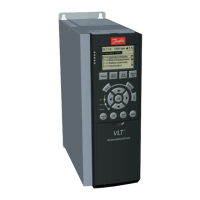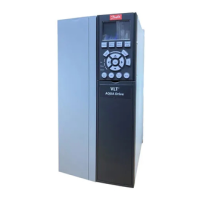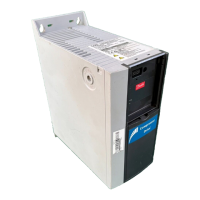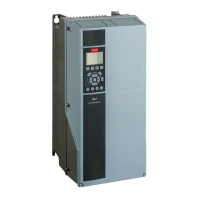FC 300 Design Guide
Introduction to FC 300
The following parameters are relevant for Process Control
Parameter Description of function
Process CL Feedback 1 Resource Par.
7-20
Select from which resource (i.e. analog or pulse input) the Process PID should
get its feedback
Process CL Feedback 2 Resource Par.
7-22
Optional: Determine if (an d from where) the Process PID should get an
additional feedback signal. If an additional feedback source is selected, the
two feedback signals will be added t ogether before being used in the Process
PID Control.
Process PID Normal/inverse Control Par.
7-30
Under [0] Normal operation, the process control will respond with an increase
of the m otor speed if the feedback is getting lower than the reference. In
the sam e situation, but under [1] Inverse operation, the process control will
respond with a decreasing motor speed instead.
Process PID Anti Windup Par. 7-31 The anti-windup function ensures that when either a frequency limit or a
torquelimitisreached,theintegratorwillbesettoagainthatcorrespondsto
the actua l frequency. This avoids integrating on an e rror that cannot in any
case b e compen sat ed for by mean s of a speed change. This function can be
disabled by selecting [0] "Off ".
Process P ID Controller Start Value Par.
7-32
In some applications, optimum setting of the p rocess regulator will mean
that it takes an excessive time for t he desire d process value to be reached.
In such applications, it m ight be an advantage to fix a m otor frequency to
which the adjustable frequency drive is to bring the motor before the process
regulator is activated. This is done by programming a Process PID Start Value
(frequency) in this parameter.
Process PID Proportional Ga in Par. 7-33 The higher the value, the quicker the control. However, too large a value
may lead to oscillations.
Process PID Integral Time Par. 7-34 Eliminates steady state speed error. Lower value means quick reaction.
However,toosmallavaluemayleadtooscillations.
Process PID Differentiation Time Par.
7-35
Provides a gain proportional t o the rate of ch ange of the feedback. A setting
of zero disables the differentiator.
Process PID Differentiator Gain Limit
Par. 7-36
If there are q uick changes in reference or feedback in a given applicatio n -
which means that the error changes swiftly - the differentiator m ay soon
become too dominant. This is because it reacts to changes in the error.
The quicker the error changes, the stronger the differentiator gain is. The
differentiator gain can thus be lim ited to allow setting of the reasonable
differentiation time for slow changes.
Process PID Feed Forward Factor Par.
7-38
In applications where there is a good (and approximately linear) correlation
between the process reference and the motor speed necessary for obtaining
that reference, the Feed Forward Factor can be used to achieve better dynamic
performance of the Process PID C ontrol.
Par. 5-54 (Pulse Filter Time Constant
#29), Par. 5-59 (Pulse Filter Time
Constant #33), Par. 6-16 (Te rminal
53 Filter Time Constant), Par. 6-26
(Terminal 54 Filter Time Constant)
If there are oscillations in the current/voltage feedback signal, these can be
damped by means of a low-pass filter. This time constant represents the
frequency limit of the ripples occurring on the feedback signal. Example: If
the low-pass filter has been set to 0.1s, the limit frequency will be 10 RAD/sec.
(the reciprocal of 0.1 s), corresponding to (10/(2 x π)) = 1.6 Hz. This will
mean that all currents/voltages that vary by more than 1.6 oscillations per
second will be removed by the filter. In other words, control will only be
carried out on a feedback signal that varies by a frequency of less than 1.6
Hz. In other words, the low-pass filter improves steady state performance
but selecting too large a filter time will deteriorate the dynamic performance
of the P rocess PID Control.
38
MG.33.B3.22 - VLT is a registered Danfoss trademark

